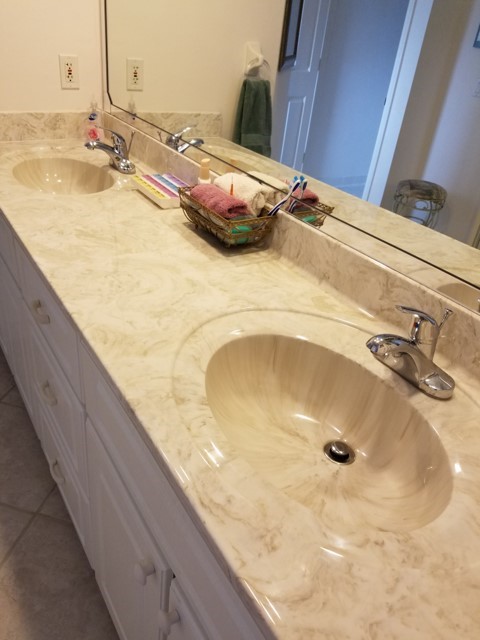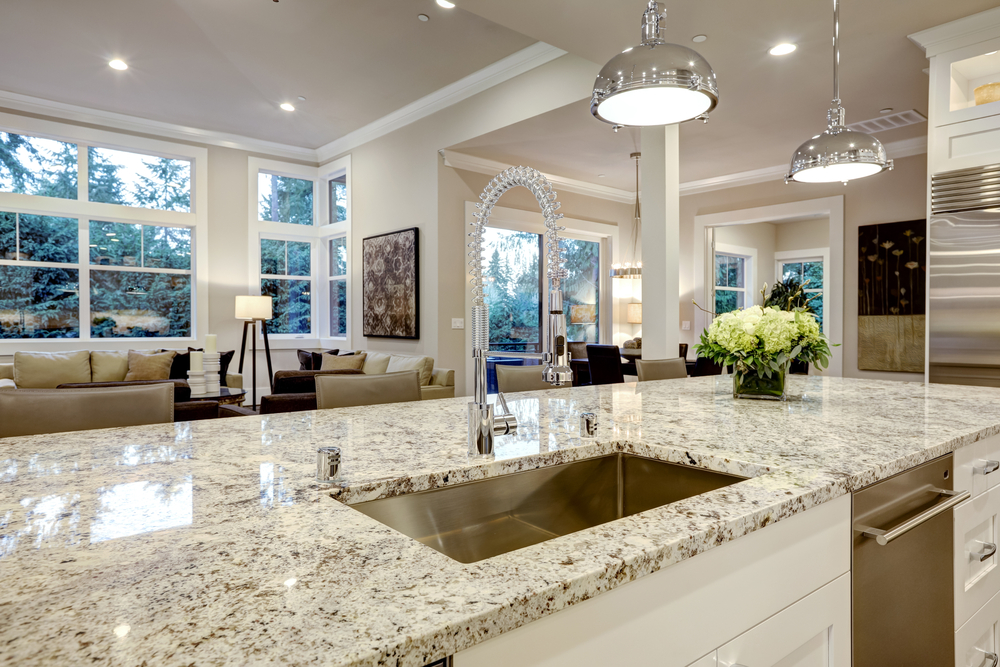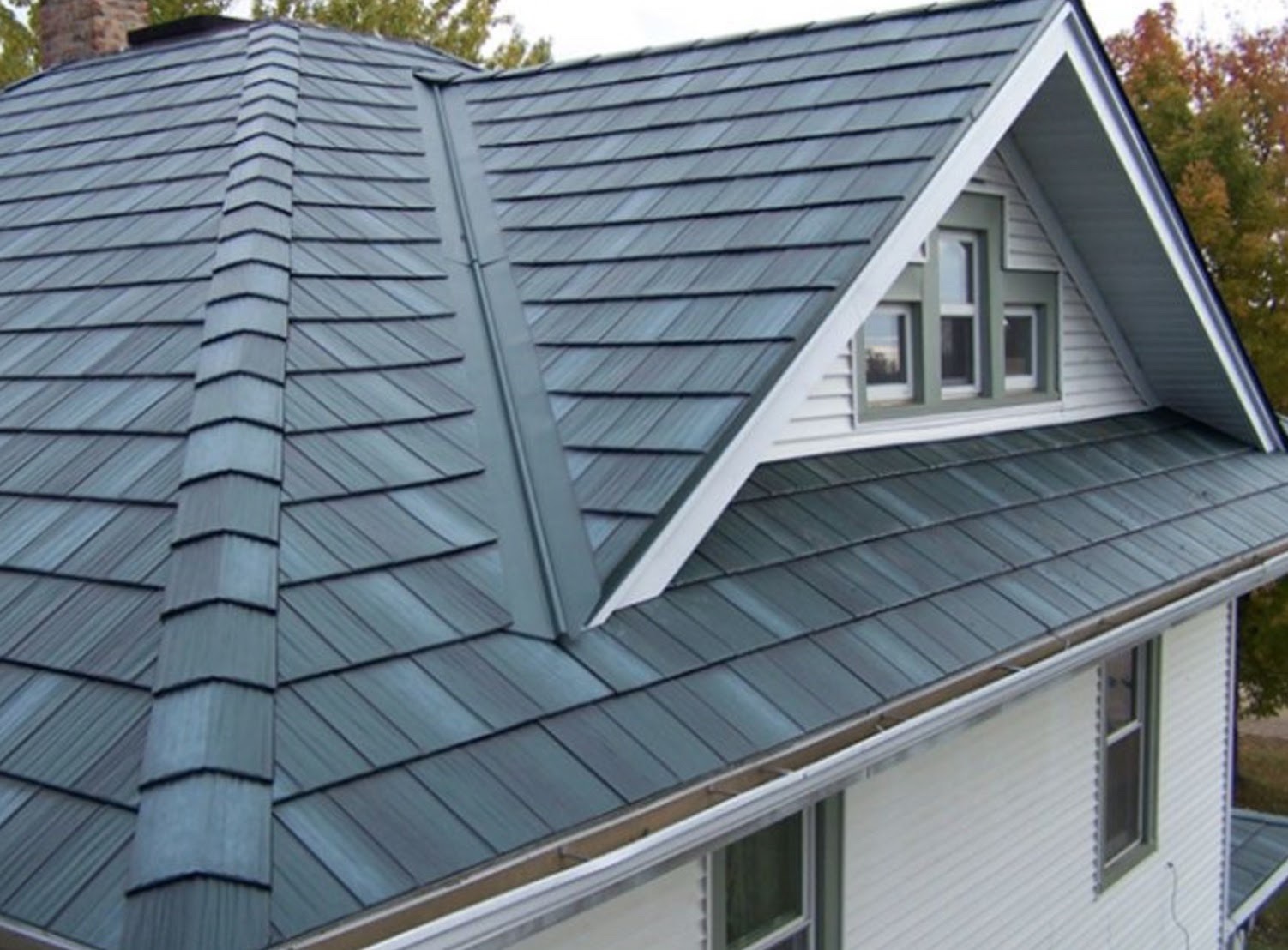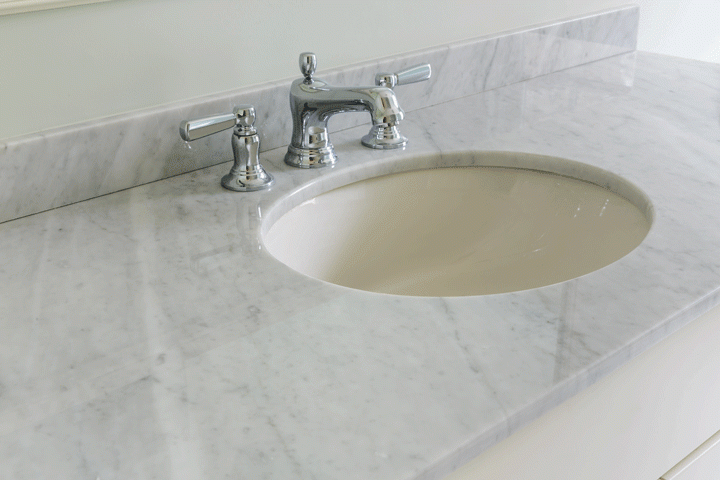When it comes to choosing a material for your bathroom vanity top, two of the most popular options are granite and marble. Both are natural stones that offer durability and a luxurious look, but they also have some key differences. Let's take a closer look at the main differences between granite and marble vanity tops. Granite: Granite is a highly durable and heat-resistant natural stone that is formed from molten magma beneath the earth's surface. It comes in a variety of colors and patterns, making it a versatile option for any bathroom design. Granite is also known for its resistance to scratches and stains, making it a great choice for high-traffic areas like the bathroom. Marble: Marble is a classic and elegant option for bathroom vanity tops. It is a metamorphic rock that is formed from limestone and is known for its unique veining and color variations. Marble is not as durable as granite and is more prone to scratches and stains, but it can still be a stunning addition to any bathroom with proper care and maintenance.Granite vs. Marble Vanity Tops
Quartz and solid surface are two popular options for bathroom vanity tops that offer a similar look and feel. However, they are made from different materials and have their own unique characteristics. Let's compare quartz and solid surface vanity tops to help you make the best choice for your bathroom. Quartz: Quartz is a man-made material that is composed of natural quartz crystals, resins, and pigments. It is highly durable, scratch-resistant, and non-porous, making it easy to maintain and resistant to stains. Quartz also comes in a wide range of colors and patterns to fit any bathroom design. Solid Surface: Solid surface is also a man-made material that is composed of acrylic or polyester resins and natural minerals. It is non-porous, making it resistant to stains and bacteria growth. However, it is not as durable as quartz and can be prone to scratches and burns if not properly cared for.Quartz vs. Solid Surface Vanity Tops
Wood and laminate are two popular options for bathroom vanity tops that offer a warm and natural look. However, they have some key differences that may influence your decision. Let's take a closer look at wood and laminate vanity tops. Wood: Wood vanity tops offer a natural and warm look to any bathroom. They can be made from a variety of wood species, including teak, bamboo, and oak. Wood is a durable material, but it is prone to water damage if not properly sealed and maintained. It also requires regular sealing to prevent stains and scratches. Laminate: Laminate vanity tops are made from layers of plastic, resin, and paper bonded together. They are highly durable and resistant to scratches and stains, making them a popular choice for high-traffic bathrooms. Laminate also comes in a variety of colors and patterns, allowing you to achieve the look of natural materials without the maintenance.Wood vs. Laminate Vanity Tops
Ceramic and porcelain are two popular options for bathroom vanity tops that offer a sleek and modern look. They are both made from clay, but they have some key differences that may influence your decision. Let's compare ceramic and porcelain vanity tops. Ceramic: Ceramic is a type of clay that is fired at a lower temperature than porcelain. It is known for its durability and resistance to scratches and stains, making it a popular choice for bathroom vanity tops. Ceramic also comes in a variety of colors and patterns, allowing for endless design possibilities. Porcelain: Porcelain is a type of clay that is fired at a higher temperature than ceramic, making it denser and more durable. It is also highly resistant to scratches and stains and is a popular choice for bathroom vanity tops. Porcelain comes in a variety of colors and can mimic the look of natural stone or wood.Ceramic vs. Porcelain Vanity Tops
Concrete and stone are two popular options for bathroom vanity tops that offer a modern and industrial look. They both have their own unique characteristics and may appeal to different design styles. Let's take a closer look at concrete and stone vanity tops. Concrete: Concrete vanity tops offer a sleek and modern look to any bathroom. They are highly durable and can be custom-made to fit any space. Concrete is also resistant to stains and scratches, but it may require regular sealing to maintain its appearance. It also comes in a variety of colors and finishes to match any design style. Stone: Stone vanity tops, such as granite, marble, or quartzite, offer a luxurious and natural look to any bathroom. They are highly durable and resistant to scratches and stains, making them a popular choice for high-traffic areas. Stone also comes in a variety of colors and patterns, allowing you to create a unique and timeless bathroom design.Concrete vs. Stone Vanity Tops
Glass and acrylic are two modern and sleek options for bathroom vanity tops that offer a unique and stylish look. They both have their own unique characteristics and may appeal to different design styles. Let's compare glass and acrylic vanity tops. Glass: Glass vanity tops offer a modern and elegant look to any bathroom. They are highly durable and resistant to scratches and stains, making them easy to maintain. Glass also comes in a variety of colors and can be back-painted to match any design style. However, it may require regular cleaning to prevent water spots and fingerprints. Acrylic: Acrylic vanity tops are made from a solid surface material that is highly durable and resistant to scratches and stains. They also come in a variety of colors and patterns, allowing you to achieve the look of natural materials without the maintenance. However, they may be prone to scratches and can be damaged by harsh chemicals.Glass vs. Acrylic Vanity Tops
When it comes to stone vanity tops, you have the option of choosing between natural or engineered stone. Both offer a luxurious and timeless look, but they have some key differences that may influence your decision. Let's compare natural and engineered stone vanity tops. Natural Stone: Natural stone, such as granite, marble, or soapstone, offers a unique and natural look to any bathroom. Each slab is one-of-a-kind, with its own variations in color and pattern. Natural stone is also highly durable and resistant to scratches and stains, making it a popular choice for bathroom vanity tops. However, it may require regular sealing and maintenance. Engineered Stone: Engineered stone, such as quartz or cultured marble, is a man-made material that is composed of natural quartz crystals, resins, and pigments. It is highly durable, scratch-resistant, and non-porous, making it easy to maintain and resistant to stains. Engineered stone also comes in a wide range of colors and patterns to fit any bathroom design.Natural vs. Engineered Stone Vanity Tops
Metal and composite materials offer a unique and modern look to bathroom vanity tops. They are both highly durable and resistant to stains, but they have some key differences that may influence your decision. Let's compare metal and composite vanity tops. Metal: Metal vanity tops, such as stainless steel or copper, offer a sleek and modern look to any bathroom. They are highly durable and resistant to scratches and stains, making them a popular choice for high-traffic areas. Metal also comes in a variety of finishes and can be custom-made to fit any space. However, it may be prone to water spots and fingerprints. Composite: Composite vanity tops are made from a combination of materials, such as acrylic, polyester, and natural minerals. They are highly durable and resistant to stains and scratches, making them easy to maintain. Composite also comes in a variety of colors and patterns, allowing you to achieve the look of natural materials without the maintenance.Metal vs. Composite Vanity Tops
Tile and cultured marble are two options for bathroom vanity tops that offer a classic and elegant look. They have different characteristics and may appeal to different design styles. Let's compare tile and cultured marble vanity tops. Tile: Tile vanity tops offer a versatile and customizable option for any bathroom. They come in a variety of sizes, colors, and patterns, allowing you to create a unique and personalized look. Tile is also highly durable and resistant to stains and scratches, but the grout lines may require regular cleaning and maintenance. Cultured Marble: Cultured marble vanity tops are made from a combination of marble dust, resin, and pigments. They offer a luxurious and elegant look to any bathroom and come in a variety of colors and patterns. Cultured marble is also highly durable and resistant to stains and scratches, making it a popular choice for bathroom vanity tops.Tile vs. Cultured Marble Vanity Tops
Bamboo and teak are two sustainable and eco-friendly options for bathroom vanity tops. They offer a warm and natural look to any bathroom, but they have some key differences that may influence your decision. Let's compare bamboo and teak vanity tops. Bamboo: Bamboo vanity tops are made from a fast-growing and renewable resource, making them a sustainable option for your bathroom. They offer a unique and natural look and are highly durable and resistant to water damage. However, they may require regular sealing to prevent stains and scratches. Teak: Teak vanity tops are made from a durable and water-resistant hardwood that is known for its natural beauty and strength. It is resistant to scratches and stains and is a popular choice for high-traffic bathrooms. Teak also requires minimal maintenance and can be sealed for added protection.Bamboo vs. Teak Vanity Tops
Different Materials for Bathroom Vanity Tops
:max_bytes(150000):strip_icc()/how-bathroom-vanity-tops-work-1821317-f7107f5d02904f6eaa96c51c62b03dfc.jpg) When it comes to designing a bathroom, one of the most important elements is the vanity top. This surface not only serves as a functional space for daily grooming, but it also plays a crucial role in the overall aesthetic of the room. With so many options available, it can be overwhelming to choose the right material for your bathroom vanity top. In this article, we'll take a closer look at the various materials used for vanity tops and their unique qualities.
When it comes to designing a bathroom, one of the most important elements is the vanity top. This surface not only serves as a functional space for daily grooming, but it also plays a crucial role in the overall aesthetic of the room. With so many options available, it can be overwhelming to choose the right material for your bathroom vanity top. In this article, we'll take a closer look at the various materials used for vanity tops and their unique qualities.
Marble
 Marble
is a popular choice for bathroom vanity tops due to its luxurious and elegant appearance. It is a natural stone that comes in a range of colors and patterns, making each piece unique. The smooth and cool surface of marble is perfect for bathrooms, and it is also resistant to heat and water. However, it does require regular sealing and maintenance to prevent staining and etching.
Marble
is a popular choice for bathroom vanity tops due to its luxurious and elegant appearance. It is a natural stone that comes in a range of colors and patterns, making each piece unique. The smooth and cool surface of marble is perfect for bathrooms, and it is also resistant to heat and water. However, it does require regular sealing and maintenance to prevent staining and etching.
Granite
 Granite
is another natural stone that is commonly used for bathroom vanity tops. It is a durable and heat-resistant material that comes in a variety of colors and patterns. Granite is also relatively low maintenance, but it is important to seal it properly to prevent any water damage or staining. It is a more affordable option compared to marble, making it a popular choice for homeowners.
Granite
is another natural stone that is commonly used for bathroom vanity tops. It is a durable and heat-resistant material that comes in a variety of colors and patterns. Granite is also relatively low maintenance, but it is important to seal it properly to prevent any water damage or staining. It is a more affordable option compared to marble, making it a popular choice for homeowners.
Quartz
 Quartz
is a man-made material that is gaining popularity in bathroom design. It is a combination of natural quartz and resin, making it highly durable and resistant to scratches and stains. Quartz is available in a wide range of colors and patterns, including some that mimic the look of natural stone. It is also non-porous, making it easy to clean and maintain.
Quartz
is a man-made material that is gaining popularity in bathroom design. It is a combination of natural quartz and resin, making it highly durable and resistant to scratches and stains. Quartz is available in a wide range of colors and patterns, including some that mimic the look of natural stone. It is also non-porous, making it easy to clean and maintain.
Ceramic
 Ceramic
is a versatile material that is commonly used for bathroom vanity tops. It comes in a variety of colors, patterns, and textures, allowing for endless design possibilities. Ceramic is also highly resistant to heat, water, and scratches, making it a practical choice for bathrooms. It is also relatively affordable and easy to maintain.
Ceramic
is a versatile material that is commonly used for bathroom vanity tops. It comes in a variety of colors, patterns, and textures, allowing for endless design possibilities. Ceramic is also highly resistant to heat, water, and scratches, making it a practical choice for bathrooms. It is also relatively affordable and easy to maintain.
Solid Surface
 Solid surface
materials, such as acrylic or polyester, are man-made and offer a seamless and sleek look for bathroom vanity tops. They are highly durable, resistant to stains and scratches, and non-porous, making them easy to clean and maintain. Solid surface materials come in a range of colors and patterns, and they can also be customized to fit any space.
Solid surface
materials, such as acrylic or polyester, are man-made and offer a seamless and sleek look for bathroom vanity tops. They are highly durable, resistant to stains and scratches, and non-porous, making them easy to clean and maintain. Solid surface materials come in a range of colors and patterns, and they can also be customized to fit any space.
Conclusion
 Choosing the right material for your bathroom vanity top ultimately depends on your personal preferences and budget. Each material has its own unique qualities and benefits, so it is important to consider your needs and the overall design of your bathroom before making a decision. Whether you prefer the luxurious look of marble or the practicality of solid surface, there is a material out there that will suit your style and meet your needs.
Choosing the right material for your bathroom vanity top ultimately depends on your personal preferences and budget. Each material has its own unique qualities and benefits, so it is important to consider your needs and the overall design of your bathroom before making a decision. Whether you prefer the luxurious look of marble or the practicality of solid surface, there is a material out there that will suit your style and meet your needs.

















:max_bytes(150000):strip_icc()/solid-surface-vs-quartz-countertops-1821253-FINAL-5bb7bec046e0fb0051ecb654.png)







/laminate-vs-hardwood-flooring-how-they-compare-1821870_FINAL-5bae84f24cedfd0026f4205d.png)














:max_bytes(150000):strip_icc()/porcelain-tile-vs-ceramic-tile-1822583-FINAL-5b1ab0f043a1030036a6e6cc.png)











































































